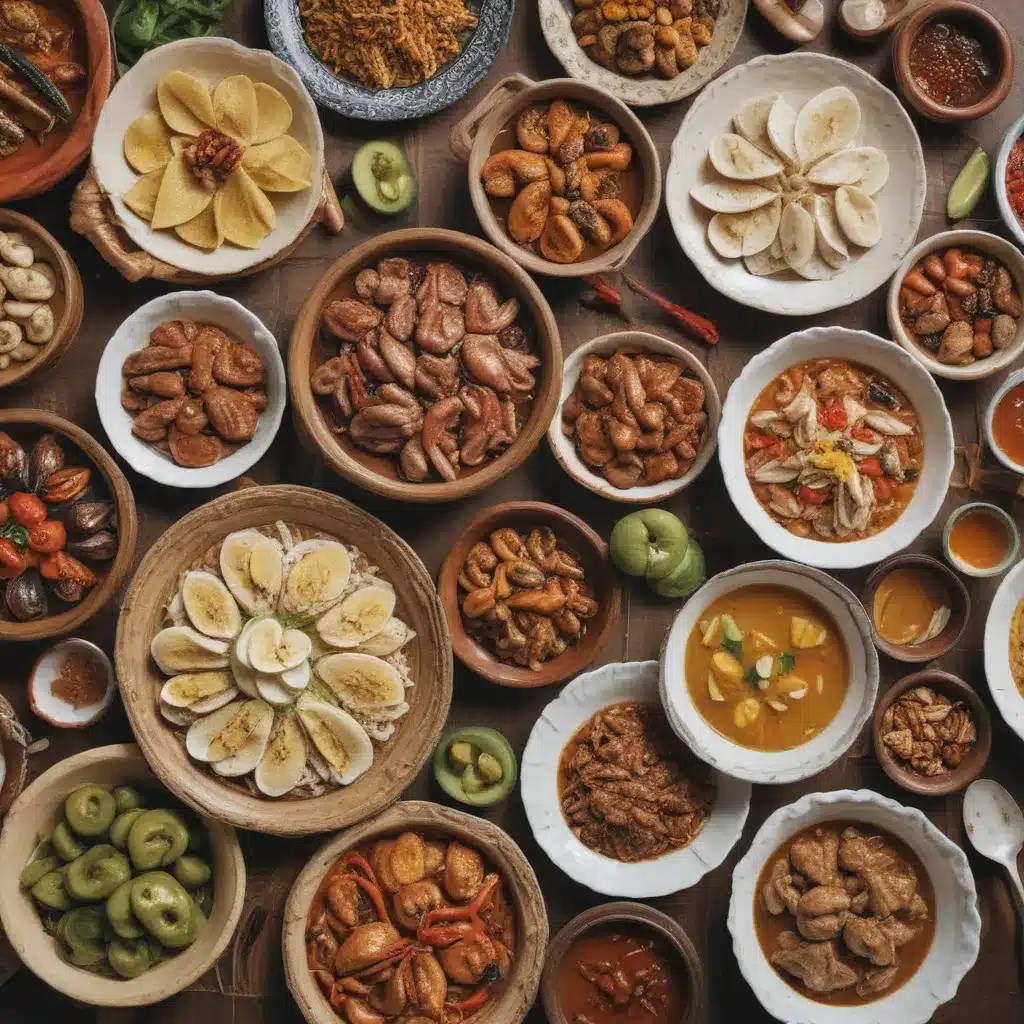
Discovering the Culinary Fusion of the Philippines
As I step into the bustling streets of Manila, the tantalizing aromas of sizzling adobo and freshly baked pandesal waft through the air, beckoning me to explore the rich tapestry of Philippine cuisine. One cannot help but marvel at the intricate dance of flavors that has unfolded over centuries, a captivating fusion of indigenous ingredients and the culinary legacies left by Spain’s colonial rule.
Let’s embark on a delectable journey, shall we? I’ll guide you through the captivating story of how Spanish influences have shaped and enriched the culinary traditions of this vibrant archipelago, transforming it into a veritable feast for the senses.
The Spanish Conquest and Its Culinary Implications
The Philippines’ tumultuous history has been marked by the Spanish conquest that lasted for over 300 years, from the 16th to the 19th century. During this period, the archipelago’s culinary landscape underwent a profound transformation, as the introduction of new ingredients, cooking techniques, and even dietary habits forever altered the way Filipinos approached food.
But how, exactly, did this cultural exchange manifest in the kitchen? One need only look at the ubiquitous adobo, a quintessential Filipino dish that bears the indelible mark of Spanish influence. The word “adobo” itself originates from the Spanish term for a marinade or seasoning, and the dish’s core technique of slowly simmering meat in a mixture of vinegar, soy sauce, garlic, and spices is a testament to the blending of Spanish and indigenous cooking methods.
Similarly, the beloved halo-halo, a refreshing dessert of shaved ice, sweetened beans, and various toppings, can trace its origins to the Spanish helado, a frozen treat that was introduced to the islands during the colonial era. The very name “halo-halo,” meaning “mix-mix” in Tagalog, speaks to the creative fusion of Hispanic and Filipino culinary traditions.
Spices, Seafood, and Specialty Ingredients
The Spanish colonization didn’t just introduce new cooking methods and dish names; it also brought with it a veritable cornucopia of ingredients that would forever transform Philippine cuisine. One such example is the humble tomato, a staple in many Spanish dishes that quickly became a beloved component of popular Filipino favorites like sinigang, a tangy sour soup.
But the culinary exchange went both ways, with the Philippines also contributing its own unique ingredients to the Spanish pantry. The versatile coconut, a ubiquitous staple in the islands, found its way into many Spanish-influenced dishes, such as the creamy coconut-based stew known as ginataan.
Seafood, too, played a pivotal role in this cultural fusion. The Philippines’ extensive coastlines and bountiful marine life provided a wealth of fresh ingredients that were eagerly embraced by Spanish settlers, leading to the development of dishes like the aromatic and flavorful paella de marisco, a seafood-based paella that has become a staple in the Philippine culinary repertoire.
The Lasting Legacy of Spanish Influences
The impact of Spanish colonization on Philippine cuisine is not only visible in the dishes we enjoy today but also in the very way Filipinos approach their food. The emphasis on communal dining, the importance of hospitality and sharing meals, and the reverence for family recipes all bear the hallmarks of Spanish cultural traditions that have been seamlessly woven into the fabric of Filipino life.
Moreover, the Spanish influence has given rise to a thriving culinary tourism industry in the Philippines, with visitors eager to experience the unique blend of flavors that characterize the country’s food culture. From the bustling street food markets of Manila to the quaint coastal towns, the opportunity to savor the fruits of this remarkable fusion is one that draws travelers from around the world.
Embracing the Uniqueness of Philippine Cuisine
As I reflect on the rich tapestry of Philippine cuisine, I’m struck by the remarkable resilience and adaptability of the Filipino people. They have not merely accepted the culinary legacies of their colonial past but have actively embraced and transformed them, creating a truly unique and captivating culinary landscape.
The story of Philippine food is one of resilience, innovation, and a deep respect for tradition. It is a tale that invites us to celebrate the blending of cultures, to savor the unexpected harmonies of flavors, and to delight in the ever-evolving nature of this remarkable culinary heritage.
So, my fellow food enthusiasts, I invite you to join me on a delectable adventure through the Philippines, where the echoes of Spain’s colonial influence resonate in every bite, and the spirit of Filipino ingenuity shines brightly. Let’s dive in and discover the true essence of this captivating culinary fusion, one dish at a time.
Interested in exploring the Philippines’ unique blend of flavors for yourself? Check out our weekend getaways, cultural tours, and adventure sports offerings to plan your perfect Philippine getaway.


